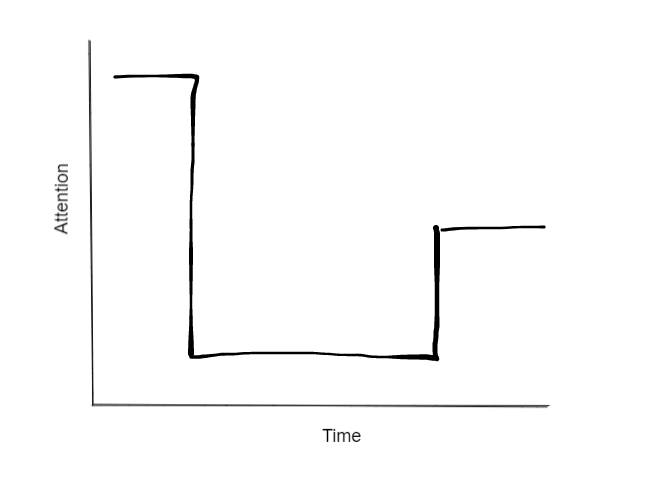Today we had a webinar with Sarah Cruise about giving presentations, during the webinar Sarah Cruise described what makes presentation great, and what can be focused on in order to make them better and more engaging.
The webinar itself was beautifully done and the presentation was great, pun intended. During it I did pick up on some key notes that would help me to improve my presenting style in general, therefore I figured that I could share it with you.
Some of the basic fundamentals would be understanding how audience behaviour is progressing through time, and just being energetic about what you're presenting as your "aura" sometimes sets the mood in the room also.

Initially audience has a lot of interest in what you're saying, but roughly after 5-10mins they lose their attention and by the end of it, it starts picking up again. It is important to understand this as it will help us build out our presentation/dashboard in such a way where the story would continuously engage with the audience and keep them interested in it.
The first step to a good presentation is to build out a solid plan and to think how your presentation can engage with audience to keep their attention if not at maximum, then at least above 70%. When creating content think about what you want to say and what your audience might want to see, and what the audience can do with the content provided to them. For example, if you're presenting difficult topics such as theoretical physics, mathematics, or any stem subject and use a lot of formulas to prove your theory and or emphasize your presentation. Try to use information that would make it easier to link to the formulas, visual queues helps audience to understand what they are hearing. Meaning instead of a formula being on the screen it should be something that compliments the formula you're talking about.
Same principle applies to dashboards, the data you're presenting should be complimentary to the story you're telling, it should emphasize the points you're talking about and showing to the viewer. Helping them to understand thing as "sales fluctuated through months" there could be a sales graph that shows the said changes.
Another point for people who are ESL (English Second Language) you're most likely going to be a lot more self-critical about what you're saying, as you're trying to translate it from one language to another. Thus, it is a good point to just pace yourself and give yourself a break, think before you speak and speak for just small chunks, if you have to stop -> think -> speak. Rinse and repeat basically. This may also help for people who start speaking faster when they get nervous and would give them a more natural pace.
Lastly, a good point to make is to use para language, where we emphasize certain words or keywords to keep the listener/audience/viewer interested in what we are saying. This draws attention to what you're talking about and helps people to refocus in general.
Thank you for reading.
